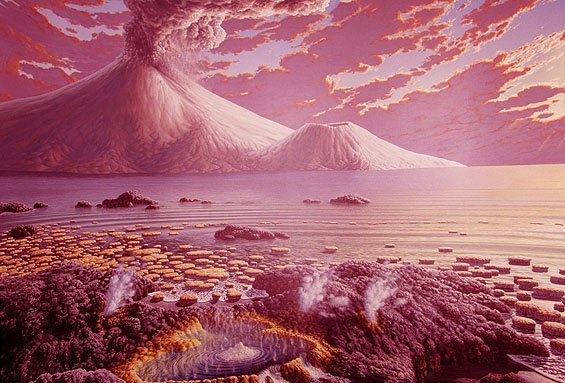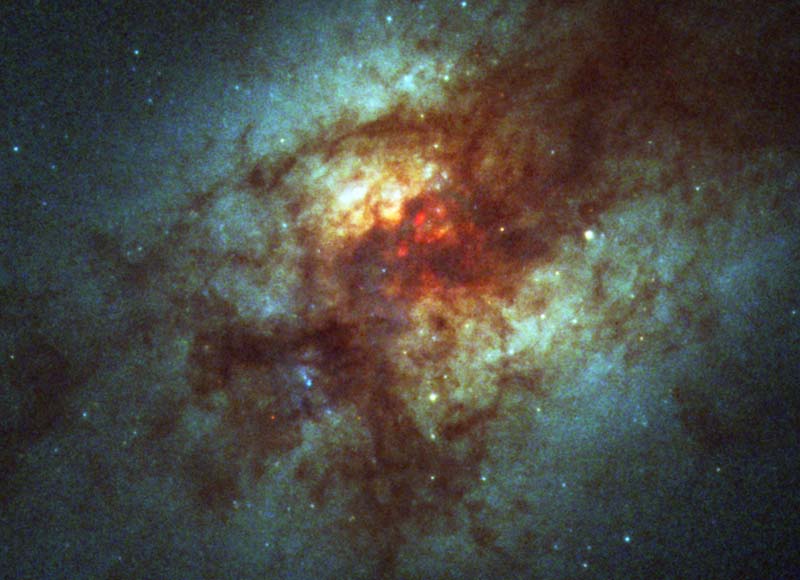Can Life Evolve From a Different Chemical Code?

All life on Earth relies on a standard set of 20 molecules called amino acids to build the proteins that carry out life's essential actions. But did it have to be this way?
All living creatures on this planet use the same 20 amino acids, even though there are hundreds available in nature. Scientists therefore have wondered if life could have arisen based on a different set of amino acids.
And what's more, could life exist elsewhere that utilizes an alternate collection of building blocks? [5 Bold Claims of Alien Life]
"Life has been using a standard set of 20 amino acids to build proteins for more than 3 billion years," said Stephen J. Freeland of the NASA Astrobiology Institute at the University of Hawaii. "It's becoming increasingly clear that many other amino acids were plausible candidates, and although there's been speculation and even assumptions about what life was doing, there's been very little in the way of testable hypotheses."
So Freeland and his University of Hawaii colleague Gayle K. Philip devised a test to try to learn if the 20 amino acids Earth's life uses were randomly chosen, or if they were the only possible ones that could have done the job.
Amino acids are molecules built primarily from carbon, hydrogen, oxygen, and nitrogen. They assemble in particular shapes and patterns to form larger molecules called proteins that carry out biological functions.
"Technically there is an infinite variety of amino acids," Freeland told Astrobiology Magazine. "Within that infinity there are lots more than the 20 that were available [when life originated on Earth] as far as we can tell."
Get the Space.com Newsletter
Breaking space news, the latest updates on rocket launches, skywatching events and more!
Testing the possibilities
The researchers defined a likely pool of candidate amino acids from which life drew its 20. They started with the amino acids that have been discovered within the so-called Murchison meteorite, a space rock that fell in Murchison, Victoria in Australia in September 1969.
The rock is thought to date from the early solar system, and to represent a sample of which compounds existed in the solar system and on Earth before life began. [Fallen Stars: The Most Famous Meteorites]
The scientists then used computers to estimate the fundamental properties of the 20 amino acids life uses, such as size, charge and hydrophilicity, or the extent to which the molecules are attracted to water.
"We know that these three are important to the ways they build proteins," Freeland said.
Freeland and Philip analyzed whether these properties could have been achieved with as much coverage and efficiency with other combinations of 20 amino acids. The researchers discovered that life seemingly did not choose its 20 building blocks randomly.
"We found that chance alone would be extremely unlikely to pick a set of amino acids that outperforms life's choice," Freeland said.

Natural selection
In fact, the researchers think early life on Earth probably used a version of natural selection to choose these amino acids. Some combinations of other amino acids were likely tried, but none proved quite as fit, so no other combinations ended up producing the numbers of successful offspring that the existing set achieved.
"Here we found a very simple test that begins to show us that life knew exactly what it was doing," Freeland said. "This is consistent with the idea that there was natural selection going on."
Getting at the question of why nature chose the 20 amino acids it did is experimentally difficult, said Aaron Burton, a NASA Postdoctoral Program Fellow who works as an astrochemist at NASA's Goddard Space Flight Center in Greenbelt, Md.
"Although a number of experiments have shown that unnatural amino acids can be incorporated into the genetic alphabet of organisms, it may never be possible to experimentally simulate sufficient evolutionary time periods to truly compare alternate amino acid alphabets," said Burton, who was not involved in the new study. "As a result, studies such as those presented by Philip and Freeland offer interesting insights and provide a framework for formulating hypotheses that can actually be tested in the lab."
Amino acids in meteorites
Right now the race is on to directly find amino acids elsewhere in the solar system. Some hints that they abound have been found on meteorites that have landed on Earth from outer space, as well as from missions such as NASA's Stardust probe, which sampled the coma of comet Wild 2 in 2004.
"All signs are that amino acids are going to be found throughout the galaxy," Freeland said. "They are apparently obvious building blocks with which to construct life. What we're finding hints at a certain level of predictability in the way things turned out."
The question of life's amino acid toolbox is interesting not just in trying to trace the origin of the life on Earth, but in wondering whether life exists on other planets, and if so, what form it takes. Scientists are particularly curious about how a different set of amino acid building blocks would result in different characteristics in the life it creates.
"That is the biggest question of all," Freeland said. "We're trying to find a way to ask, if you change the set of amino acids with which we're building, what effect does that have on the proteins you can build. The most interesting thing is, nobody knows."
Philip and Freeland reported their findings in a paper published in the April 19 issue of the journal Astrobiology.
This story was provided by Astrobiology Magazine, a web-based publication sponsored by the NASA astrobiology program.
Join our Space Forums to keep talking space on the latest missions, night sky and more! And if you have a news tip, correction or comment, let us know at: community@space.com.

Clara Moskowitz is a science and space writer who joined the Space.com team in 2008 and served as Assistant Managing Editor from 2011 to 2013. Clara has a bachelor's degree in astronomy and physics from Wesleyan University, and a graduate certificate in science writing from the University of California, Santa Cruz. She covers everything from astronomy to human spaceflight and once aced a NASTAR suborbital spaceflight training program for space missions. Clara is currently Associate Editor of Scientific American. To see her latest project is, follow Clara on Twitter.










